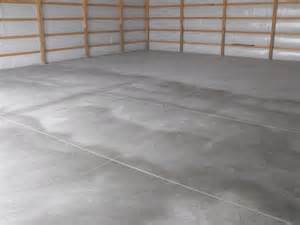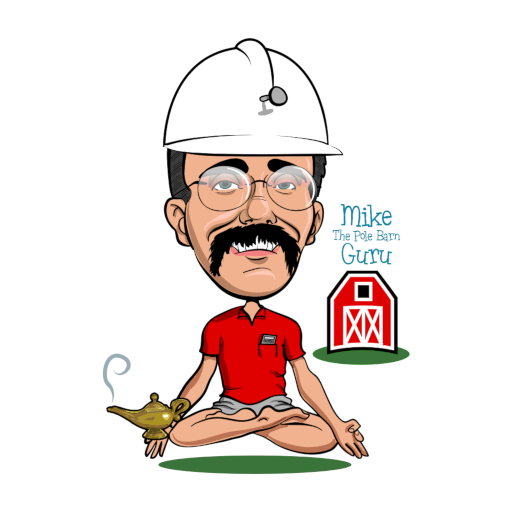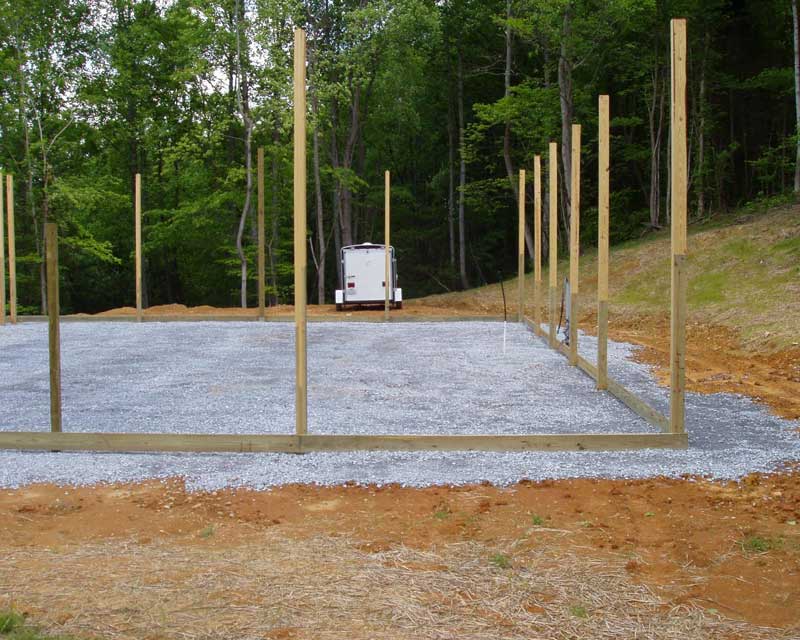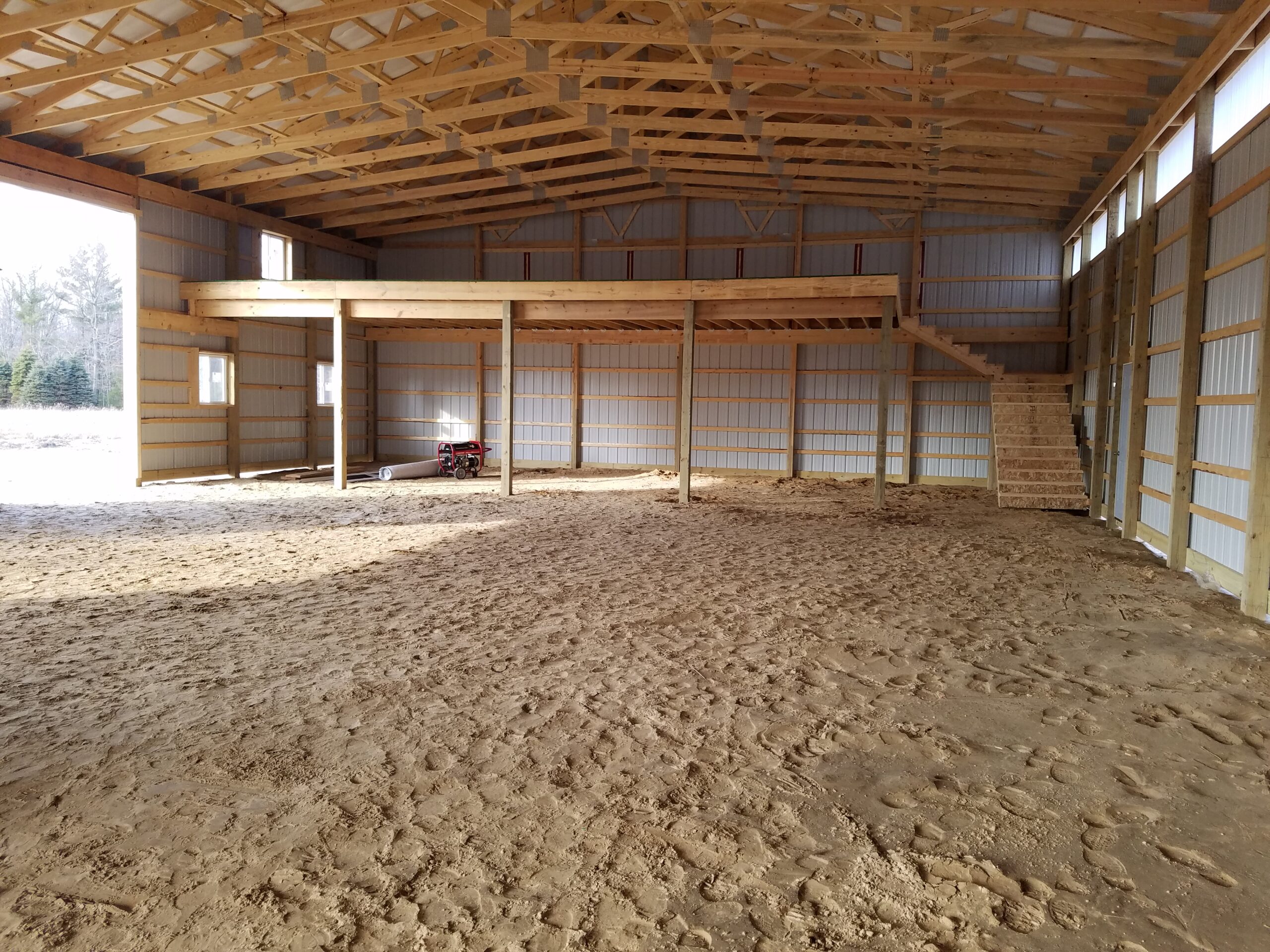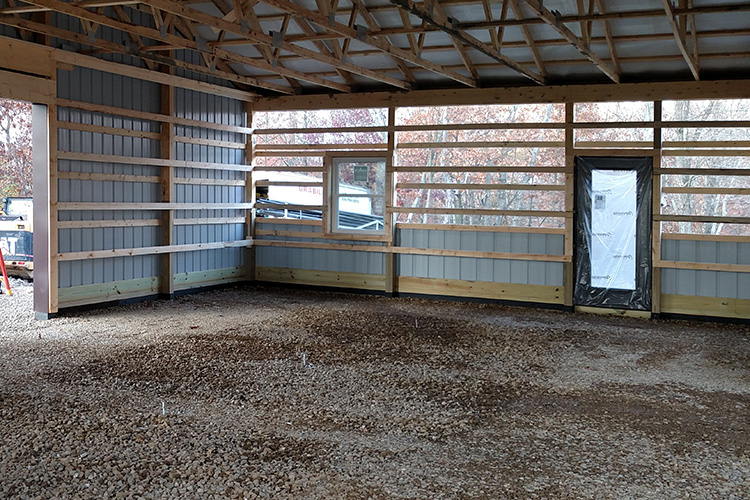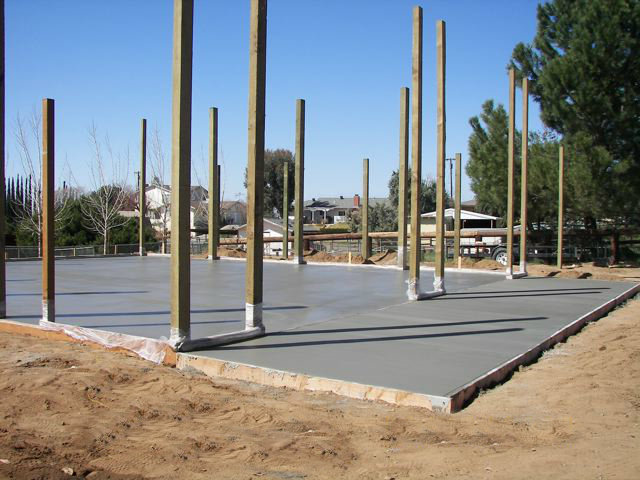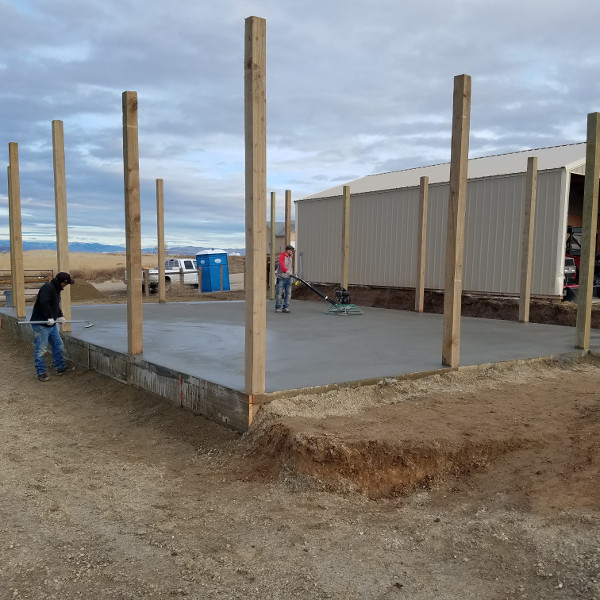The Benefits of a Concrete Floor for Your Pole Barn
When it comes to constructing a pole barn, one important decision that needs to be made is choosing the type of flooring for the structure. While there are several options available, a concrete floor offers numerous benefits that make it an ideal choice for your pole barn.
- Durability: Concrete floors are known for their incredible durability and longevity. They are designed to withstand heavy loads and constant foot traffic, making them perfect for a pole barn that may be used for storing equipment, vehicles, or livestock. Concrete floors also have a high resistance to wear and tear, ensuring that they will last for many years to come.
- Low Maintenance: One of the key advantages of a concrete floor is its low maintenance requirements. Unlike other types of flooring that may require regular cleaning, sealing, or refinishing, concrete floors only need occasional sweeping or mopping to keep them looking clean and presentable. This makes them a cost-effective option in the long run, as they do not require frequent or costly maintenance.
- Moisture Resistance: Pole barns are often exposed to moisture due to weather conditions or the storage of wet items such as vehicles or equipment. Concrete floors have excellent moisture resistance, preventing the growth of mold, mildew, or other types of water damage. This ensures a safe and healthy environment within your pole barn, protecting your belongings from potential water-related issues.
- Versatility: Concrete floors offer great versatility in terms of design and customization. They can be stained, stamped, or polished to create a variety of finishes and styles that suit your personal preferences or specific needs. Additionally, concrete floors can be enhanced with epoxy coatings or other protective treatments to increase their resistance to chemicals, stains, and abrasions.
- Energy Efficiency: A concrete floor can contribute to the overall energy efficiency of your pole barn. Concrete has the ability to absorb and retain heat, helping to regulate the temperature inside the structure. This can result in reduced energy consumption for heating or cooling, leading to cost savings over time.

How to Build a Pole Barn with a Concrete Floor
Step 1: Obtain Necessary Permits and Permissions
Before starting the construction process, it is important to obtain the necessary permits and permissions from the local authorities. This may include a building permit, zoning approval, or any other requirements specific to your area. Contact the relevant authorities to understand the regulations and ensure compliance.
Step 2: Clear and Level the Site
Clear the construction site of any debris, vegetation, or obstacles that may hinder the building process. It is crucial to have a level surface for constructing the pole barn. Use a bulldozer, excavator, or other appropriate equipment to remove any obstructions and create a level ground for the concrete floor.
Step 3: Design and Layout
Create a detailed design and layout plan for your pole barn, taking into consideration the intended use and dimensions. Determine the size, height, and layout of the building, including the location of doors, windows, and other features. This will help guide the construction process and ensure that the end result meets your requirements.
Step 4: Prepare the Pole Holes
Using the layout plan as a guide, mark the locations for the pole holes. Carefully dig the holes according to the required depth and diameter, ensuring they are evenly spaced and aligned. It is advisable to use post-hole diggers or an auger for efficiency and accuracy.
Step 5: Set the Poles
Place the poles into the prepared holes, ensuring they are level and plumb. Use temporary braces to hold them in position until the concrete is poured and set. Take care to accurately align the poles based on the layout plan to ensure the structural integrity of the pole barn.
Step 6: Pour the Concrete Floor
Once the poles are securely in place, it is time to pour the concrete floor. Prepare the concrete mixture according to the manufacturer’s instructions or hire a professional concrete contractor for this task. Pour the concrete into the designated area, making sure it is evenly distributed and leveled. Allow sufficient time for the concrete to cure before proceeding further.
Step 7: Install the Frame and Roof
After the concrete floor has cured, begin installing the frame and roof of the pole barn. This involves attaching the trusses, purlins, and other structural components according to the design plan. Ensure that the frame is securely fastened to the poles and that all connections are strong and stable.
Factors to Consider When Choosing the Right Concrete for Your Pole Barn
When building a pole barn with a concrete floor, choosing the right type of concrete is crucial. The durability and longevity of your pole barn depend on selecting the appropriate concrete mix. Here are some factors that you should consider when making this important decision:
- Load-Bearing Capacity: One of the most critical factors to consider is the load-bearing capacity of the concrete. The concrete used for your pole barn should be able to support the weight of both the structure itself and any heavy machinery or equipment that will be stored inside. It is essential to determine the maximum load that the concrete will need to bear and choose a concrete mix with the appropriate strength.
- Climate and Weather Conditions: The climate and weather conditions in your area should also influence your choice of concrete. Extreme temperatures, freeze-thaw cycles, and high humidity can all affect the performance and durability of the concrete. For example, in colder regions, it is advisable to use air-entrained concrete that can better withstand freeze-thaw cycles.
- Moisture Resistance: Pole barns may be prone to moisture-related issues such as condensation, leaks, or water seepage. Therefore, it is crucial to choose a concrete mix that provides good moisture resistance. Consider using a waterproofing admixture or adding a vapor barrier to the concrete to prevent moisture-related problems in the future.
- Concrete Finishes: The finish of the concrete floor can also influence your choice of concrete. Depending on your specific needs and preferences, you may opt for a smooth finish, exposed aggregate, or a stamped pattern. Different concrete mixes are suitable for different finishes, so it is important to choose the right mix to achieve the desired appearance.
- Cost and Availability: Lastly, cost and availability are practical factors to consider when selecting the right concrete for your pole barn. The cost of the concrete mix, including any additional additives or special treatments, should fit within your budget. Additionally, the availability of the chosen concrete mix in your area should be taken into account, as it may impact the overall timeline and cost of your project.
Tips and Tricks for Maintaining a Pole Barn with a Concrete Floor
Regular Cleaning and Sweeping:
One of the most important tips for maintaining a pole barn with a concrete floor is to regularly clean and sweep the area. This is essential for removing any dirt, debris, or spills that can accumulate over time and potentially damage the floor. Use a broom or a dust mop to sweep the floor on a weekly basis, and consider using a pressure washer for a more thorough cleaning every few months.
Avoid Harsh Chemicals:
When cleaning the concrete floor in your pole barn, it is important to avoid using harsh chemicals that can damage the surface. Instead, opt for mild detergents or specially formulated cleaners that are safe for use on concrete. Harsh chemicals can strip away the protective sealant on the floor and cause it to deteriorate over time.
Seal the Concrete:
Applying a sealant to the concrete floor can help protect it from stains, moisture, and other potential damage. A concrete sealer creates a barrier that prevents liquids from penetrating the surface, making it easier to clean and maintain. Consider applying a high-quality concrete sealer every few years or as recommended by the manufacturer to keep your pole barn floor in optimal condition.
Inspect for Cracks and Damage:
Regularly inspecting the concrete floor for cracks, chips, or other forms of damage is crucial for maintaining its integrity. Small cracks can quickly grow and lead to more extensive damage if left untreated. If you notice any cracks or damage, it is important to repair them promptly using a concrete patching compound or contacting a professional for assistance.
Prevent Moisture Buildup:
Moisture can be a major concern for pole barns with concrete floors, as it can lead to mold, mildew, and even structural issues. To prevent moisture buildup, ensure that the barn is properly ventilated and consider installing a dehumidifier if necessary. It is also important to promptly address any leaks or water infiltration to avoid long-term damage to the concrete floor.
Protect Against Heavy Equipment:
If you use heavy equipment or machinery in your pole barn, it is important to take precautions to protect the concrete floor. Place rubber mats or plywood sheets in high-traffic areas or where heavy equipment is regularly used to distribute the weight and prevent damage. Additionally, avoid dragging heavy items across the floor to minimize the risk of scratches or gouges.
Pole barn concrete slab DIY Home Improvement Forum
Variances in Surface of Pole Building Concrete Slab – Hansen Buildings
Site Prep for Pole Barns – MilMar Pole Buildings
Pouring Concrete in an existing pole barn – including plumbing
Garage u0026 Pole Building Floor Construction Domenico Concrete Canton
When a Concrete Slab Floor Might be Less Expensive Than Thought
Pole Barn Hay Shed Tack Building Levi King Construction
Related Posts:
